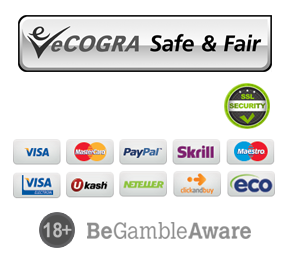In 2020, the NSW Office of Responsible Gambling initiated a study into the connection between young people and gambling. The now publicised results reveal some profound truths, the more notable of which are detailed below.
The study encompassed gambling and simulated gambling among those aged 12 to 17. The researchers involved sought to use the data to better understand and combat gambling-related issues.
The methodology
The research was conducted in two stages with NSW youths aged 12 to 17. Initially, 16 focus groups with 104 participants each were conducted in eight locations across the state. The groups targeted Vietnamese and Chinese participants in particular, as well as two with Indigenous participants.
An online survey was then performed with 2,200 young respondents which ran from March 28 to May 11, 2020.
Crunching the numbers
Analysing the collected data allows one to establish the most salient truths around underage gambling in NSW.
The study established that young people in NSW tend to first engage with monetary and simulated gambling at around the ages of 11 to 12 years and 2020 saw young people choose simulated gambling over more traditional methods.
All the individual types of simulated gambling proved more popular among the youth than most other forms of gambling, except for private betting. The participants who had participated in simulated gambling were shown to be most likely to transition to more traditional forms in future.
Problematic gambling levels are higher than those of problem/at-risk gambling with parents being the most common introduction young people had to the pastime. Gambling with parents, receiving parental approval for gambling, or growing up with an adult who’s a problem gambler were all factors that influenced the respondents’ behaviour.
A year in review
29.8% of respondents stated they had gambled in the previous year and 21% had engaged in commercial gambling (excluding private betting). 2.2% of this group were determined to be at-risk with another 1.5% being labelled as problem gamblers.
53.7% of gambling activity took place in the presence of a parent or guardian, followed by friends 17 or younger at 26.8%, relatives 18 or older came in at 20.7%, relatives under 18 at 20.1%, and grandparents at 19.5%. A mere 9.1% of respondents stated that they gambled alone.
Private betting emerged as the most popular form of gambling at 17.1%. Scratchies/lotteries represented 11%, while bingo and keno came in at 6% and 5.1%, respectively.
17% of respondents stated they had gambled in the last month, with 16.5% stating they had gambled in the last week. 24.9% revealed they had placed bets online, and that the source of their gambling funds largely came from home environments with 60.4% revealing that they used their pocket money to gamble.
The gaming-gambling problem
The youth in NSW can actively avoid real-money gambling avenues but evidence shows that addictive behaviour can form around types of gaming too. 40.1% of participants said that they had played some form of a game with gambling components over the previous year.
To be considered a “game with gambling components” encompasses a few standards that must be met.
These are games with gambling components on social networking sites, gambling-themed apps from an app store, video games with gambling “mini-games”, and free games from gambling apps or websites that don’t require real-money bets.
The study revealed that 31.7% of respondents had played video games with a “mini” gambling component in the previous year. The data showed this that this element of gameplay had been increasingly featured in recent years. In-game gambling mostly appears to enable players to gain additional lives, free items, and in-game currency rewards.
The loot box trap
Loot boxes are an almost ubiquitous feature in gaming. 72.2% of participants revealed that they had opened or purchased loot boxes over the previous year.
According to a definition on the UK House of Commons library website, loot boxes are “features in video games which may be accessed through gameplay, or purchased with in-game items, virtual currencies, or directly with real-world money. They often appear as chests, crates, or card packs.”
One-third of surveyed Australian youth revealed that they had spent money on loot boxes, at an average rate of approximately $10 per month. The respondents largely confirmed that their reasons for obtaining loot boxes were that they serve as in-game currency and provide the players with specific advantages or progress boosts. Loot boxes are also highly coveted because they often contain special items or skins which are alternate costumes or cosmetic enhancements for player characters.
The transactional nature of loot boxes seems fairly simple at first. One simply pays money and gets something beneficial in return. However, the randomised nature of a lot of loot box features can act as a “gateway drug,” as the purchase is essentially a game of chance that can steer players towards traditional gambling.
This was demonstrated when 14.5% of participants revealed that they used in-game items for gambling. A smaller percentage of 7.9% said they betted privately with their friends while 6.2% has gone as far as wagering on Esports.
The report in full
If this condensed version has whet your appetite for more, the full 279-page report is freely available for all who would like to see. It can be accessed via this link.

